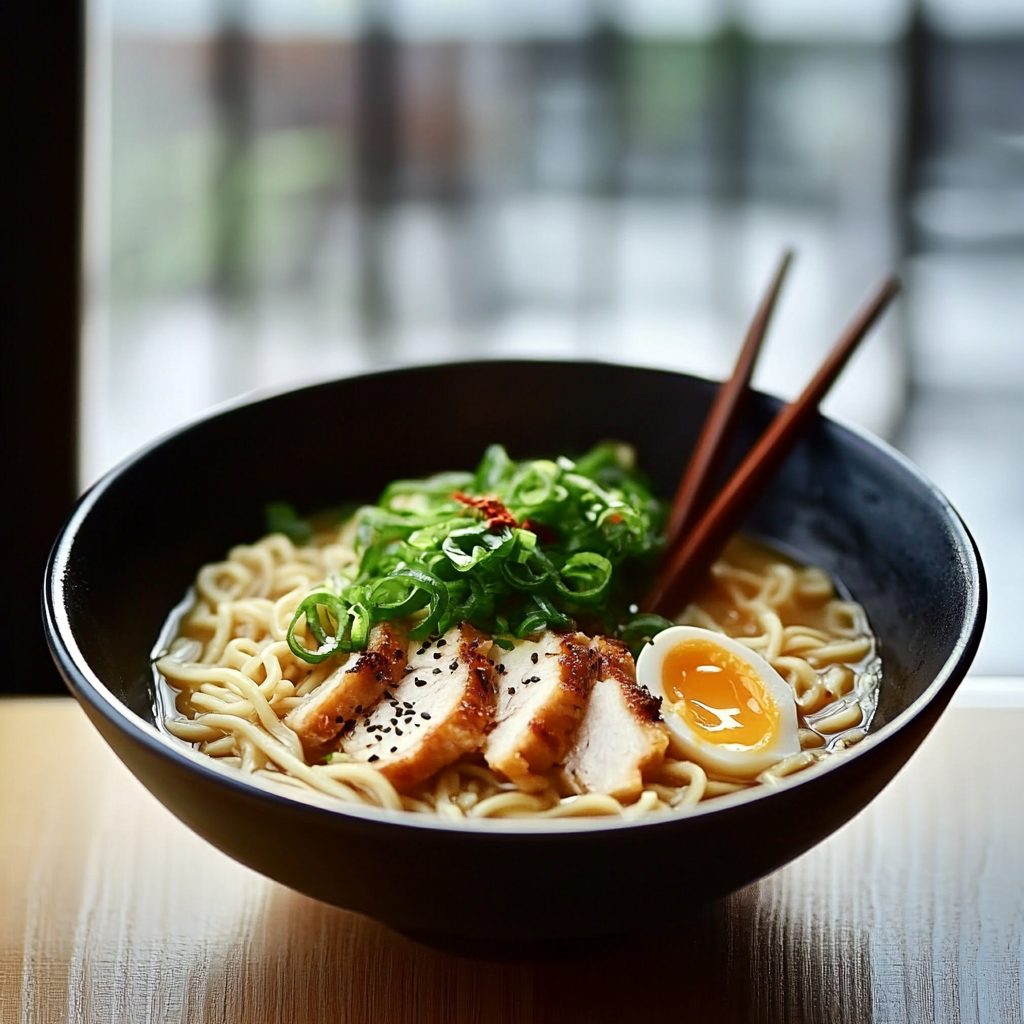Have you ever craved a steaming bowl of Japanese ramen that transports you straight to the bustling streets of Tokyo? This delightful dish brings together rich flavors and warm aromas that will awaken your senses and satisfy your hunger. Imagine slurping up perfectly cooked noodles submerged in a fragrant broth while savoring the fresh toppings that bring the whole bowl to life.
Japanese ramen is not just a meal; it’s an experience. Whether you’re enjoying it on a chilly evening or serving it at a cozy gathering with friends, this comforting dish is sure to impress. The combination of savory broth, chewy noodles, and colorful toppings creates a symphony of taste and texture that will have everyone reaching for seconds. Get ready to embark on a culinary adventure as we dive into the art of making authentic Japanese ramen right in your own kitchen.
Why You’ll Love This Japanese Ramen
- Rich Flavor: The depth of flavor in this ramen comes from simmering bones and aromatic vegetables to create a savory broth that’s both satisfying and comforting.
- Customizable Toppings: You can personalize your bowl with an array of toppings like soft-boiled eggs, green onions, nori, or even spicy chili oil to suit your taste.
- Perfect for Any Occasion: Whether it’s a weeknight dinner or a weekend feast with friends, this dish fits perfectly into any meal plan.
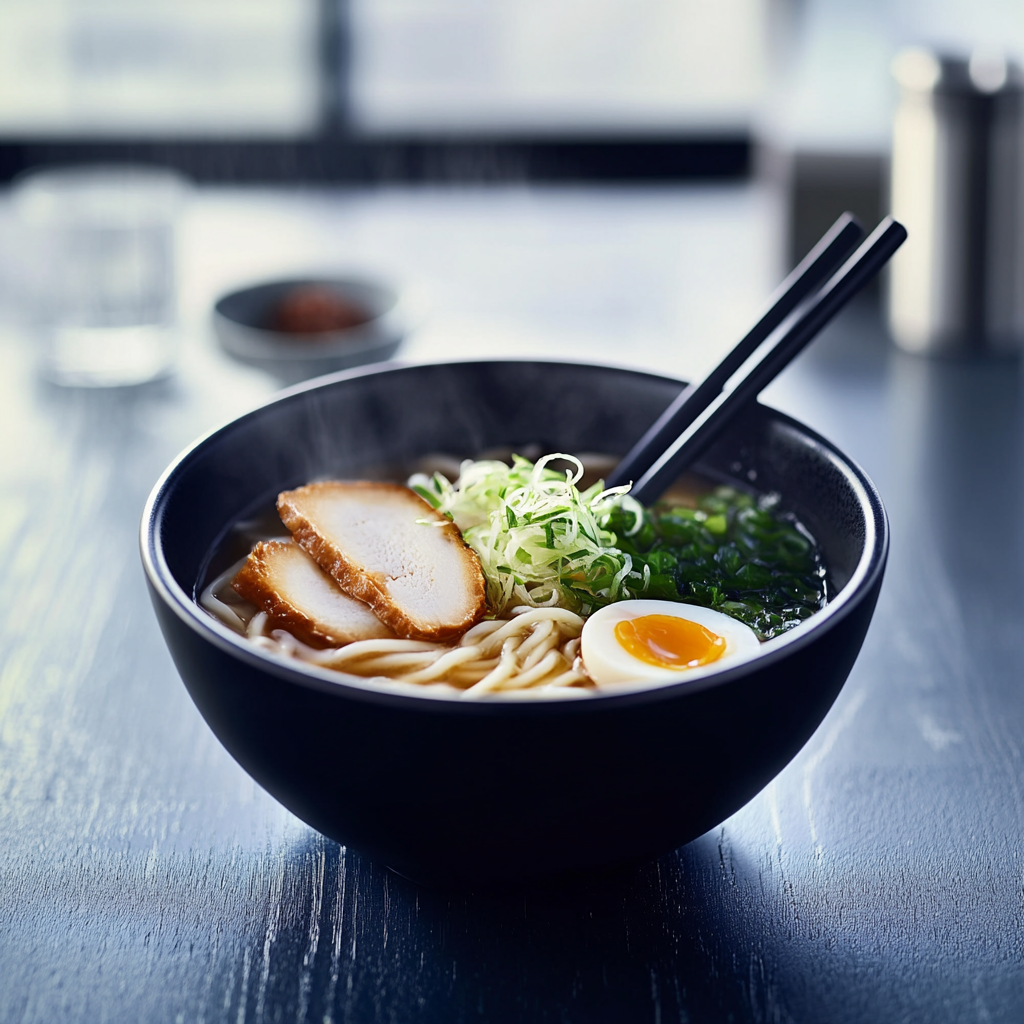
Ingredients for Japanese Ramen
Here’s what you’ll need to make this delicious dish:
- Ramen Noodles: Fresh or dried noodles work well; choose according to availability. Fresh noodles often provide better texture.
- Pork Bones: Use pork neck bones or trotters for creating a rich broth; simmer for several hours for optimal flavor.
- Chicken Stock: Adds depth to the broth; homemade stock is ideal but store-bought works fine too.
- Soy Sauce: Use low-sodium soy sauce for seasoning the broth without overpowering it.
- Mirin: This sweet rice wine balances the flavors; it’s essential for authentic tasting ramen.
For the Toppings:
- Soft-Boiled Eggs: Cooked until yolks are slightly runny; they add richness to each bite.
- Green Onions: Chopped finely for garnish and added freshness in flavor.
- Nori Sheets: Seaweed sheets that enhance umami flavor and provide beautiful presentation.
The full ingredients list, including measurements, is provided in the recipe card directly below.
How to Make Japanese Ramen
Follow these simple steps to prepare this delicious dish:
Step 1: Prepare the Broth
Start by roasting the pork bones in an oven preheated to 400°F (200°C) for about 30 minutes. This step enhances their flavor before adding them to the pot.
Step 2: Simmer the Broth
In a large stockpot, combine roasted bones with chicken stock and fill with water until covered. Bring it to a boil then reduce heat and let simmer for at least four hours.
Step 3: Add Seasonings
After simmering, strain out solids. Return clear broth back to heat and stir in soy sauce and mirin. Adjust seasoning according to your taste preference.
Step 4: Cook the Noodles
In another pot of boiling water, cook the ramen noodles according to package instructions (usually around three minutes). Drain and set aside.
Step 5: Assemble Your Bowls
Divide cooked noodles among bowls. Pour hot broth over noodles until submerged.
Step 6: Add Toppings
Top each bowl with soft-boiled eggs, green onions, nori sheets, and any additional toppings you love before serving.
Transfer to plates and enjoy this amazing homemade Japanese ramen!
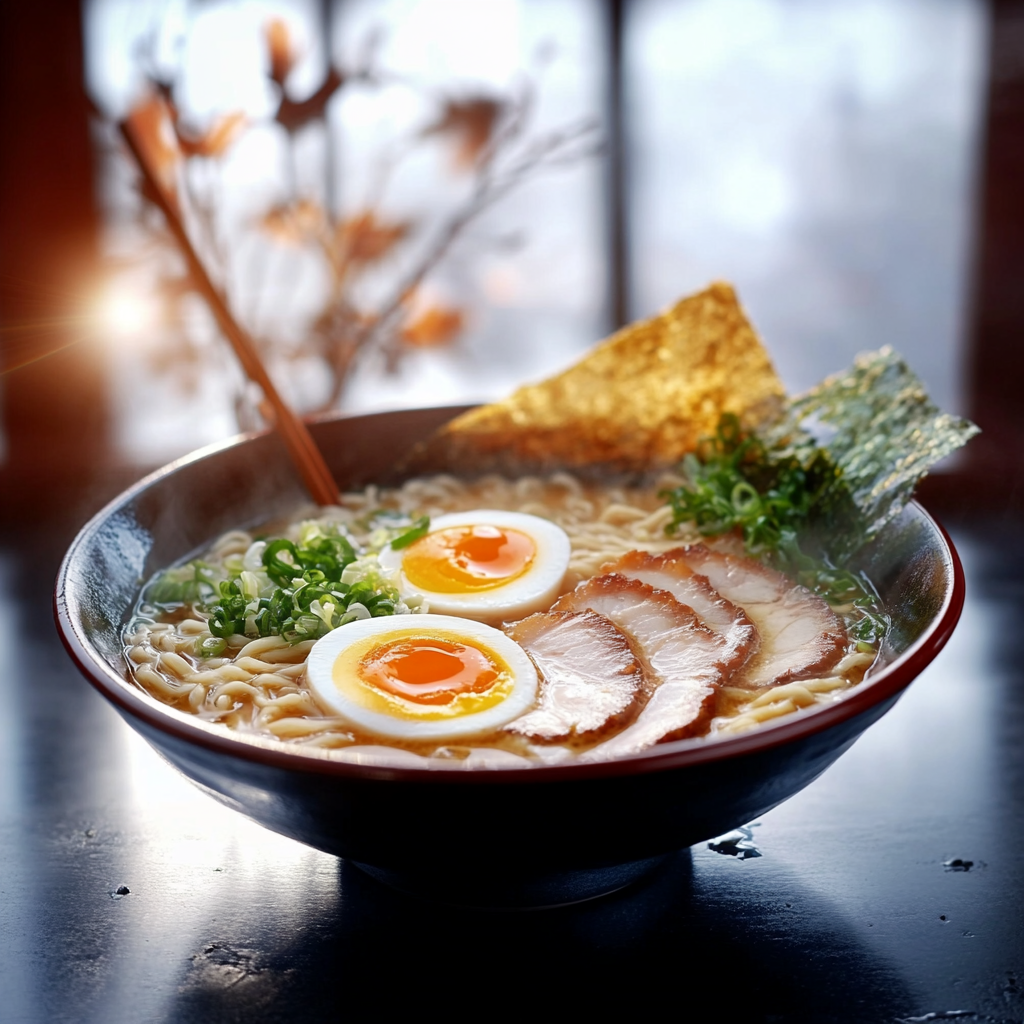
Tips and Tricks
Here are some helpful tips to ensure the best results for your dish:
-
- Use Quality Ingredients: The flavor of your broth depends greatly on the quality of your bones and stock.
-
- Don’t Rush Cooking Time: Allowing sufficient time for boiling enhances depth—great ramen takes patience.
-
- Tweak Broth Flavors: Experiment with additional seasonings like miso or sesame oil for unique variations.
-
- Add Spice if Desired: If you enjoy heat, consider adding chili paste or pepper flakes while cooking.
- Prepare Ahead When Possible: Broth can be made ahead of time; refrigerate overnight then reheat before serving.
Mistakes to avoid
- Not Using Authentic Ingredients: One common mistake when preparing Japanese ramen is opting for non-authentic ingredients. Authentic ramen relies on specific noodles, broth, and toppings that define its flavor and texture. For instance, using instant noodles or generic broth can lead to a dish that lacks the depth of flavor found in traditional recipes. Invest in high-quality ramen noodles and homemade broth wherever possible. This ensures your dish captures the true essence of Japanese ramen.
- Overcooking the Noodles: Cooking ramen noodles for too long can ruin the entire dish. Ramen should have a perfect al dente texture, which means it should be firm yet tender when bitten. Overcooked noodles become mushy and lose their delightful chewiness. Always follow the cooking instructions on the package and taste-test to achieve that ideal texture before draining them.
- Ignoring Broth Quality: The broth is the heart of any Japanese ramen dish, so ignoring its quality is a significant mistake. A rich, flavorful broth takes time to prepare; using store-bought options may save time but will compromise taste. Consider simmering bones, vegetables, and aromatics for several hours to develop a deep flavor profile. This extra effort makes all the difference in achieving authentic Japanese ramen.
Serving Suggestions
This Japanese Ramen is versatile and pairs wonderfully with:
- Steamed Edamame: These lightly salted soybean pods make for a perfect appetizer, complementing the savory flavors of the ramen.
- Karaage Chicken: Crispy, marinated fried chicken adds a delightful crunch to your meal and balances the soup’s richness.
- Japanese Pickles: A side of pickled vegetables provides a refreshing contrast to the warm, hearty ramen, enhancing your dining experience.
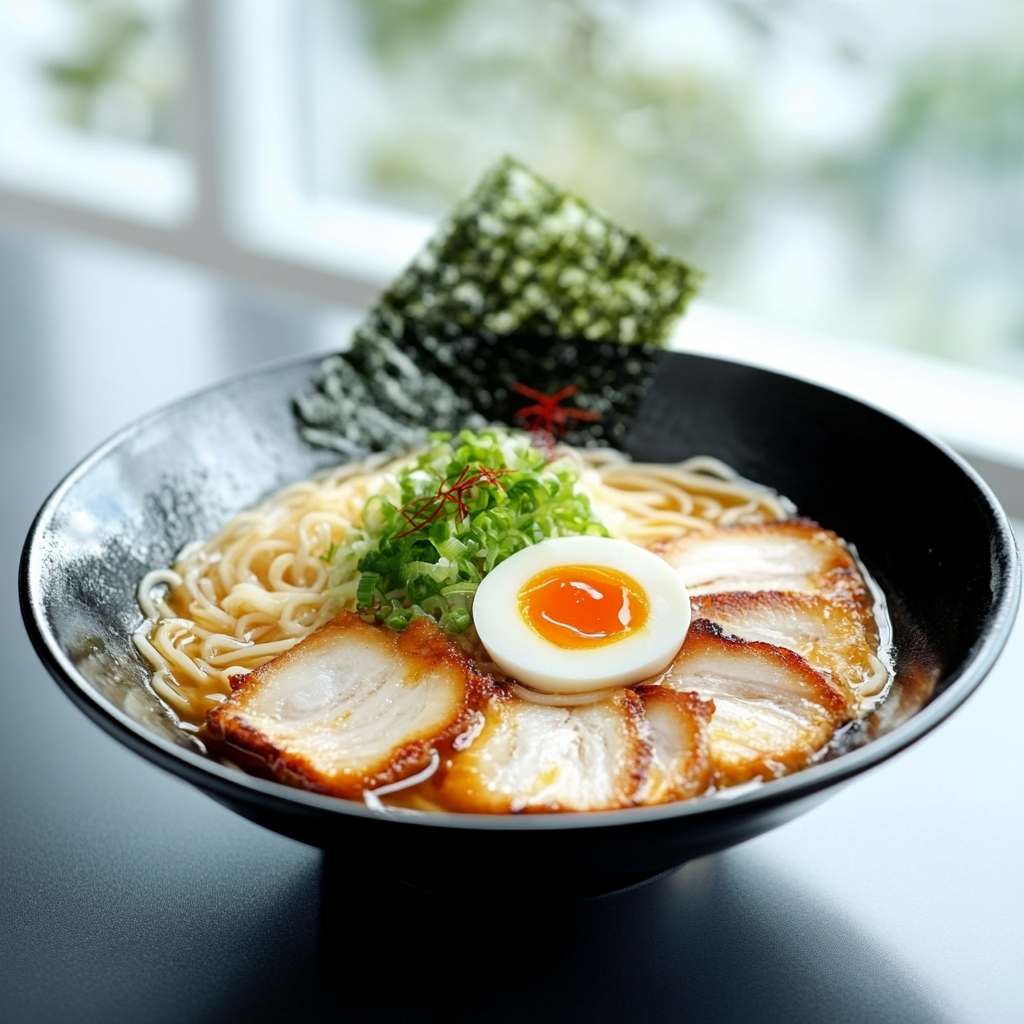
FAQs
What are the main ingredients in Japanese Ramen?
Japanese Ramen primarily consists of four key components: broth, noodles, toppings, and seasoning. The broth can be made from chicken, pork, or miso base, which gives it depth and flavor. The noodles are usually made from wheat flour and have a unique texture that holds up well in the soup. Common toppings include sliced pork belly (chashu), soft-boiled eggs, green onions, and nori (seaweed). Seasoning elements such as soy sauce or salt enhance the overall taste of this beloved dish.
How can I make my Japanese Ramen healthier?
To create a healthier version of Japanese Ramen, consider using whole grain noodles or shirataki noodles as a low-carb alternative. You can also load your bowl with fresh vegetables like spinach, mushrooms, and bean sprouts for added nutrients. Instead of fatty cuts of meat, opt for lean chicken or tofu to maintain protein content while reducing calories. Additionally, making a homemade broth allows you to control sodium levels and avoid preservatives found in store-bought options.
Can I customize my Japanese Ramen?
Absolutely! One of the great aspects of Japanese Ramen is its versatility. You can customize it to suit your taste preferences by selecting different broths such as tonkotsu (pork), shoyu (soy sauce), or shio (salt). Experiment with various toppings like corn, bamboo shoots, or spicy chili oil. Vegetarians can enjoy a delicious vegetable-based broth loaded with an array of fresh ingredients. Feel free to get creative with flavors and textures to make your perfect bowl!
What drinks pair well with Japanese Ramen?
When enjoying Japanese Ramen, several drink options can enhance your meal experience. Traditional beverages like green tea or sake complement the dish’s umami flavors wonderfully. If you prefer something non-alcoholic, try iced matcha lemonade for a refreshing contrast. For those who enjoy beer, light lagers or Japanese craft beers can balance out the richness of ramen without overwhelming its delicate flavors.
Conclusion for Japanese Ramen
In conclusion, Japanese Ramen is not just a dish; it’s an experience full of rich flavors and textures that can be tailored to individual preferences. From selecting the right broth to choosing satisfying toppings, there are countless ways to enjoy this iconic meal. Remember to experiment with serving suggestions that elevate your ramen experience further. Whether you prefer it spicy or mild, healthy or indulgent, Japanese Ramen is sure to delight your taste buds every time you prepare it at home. Dive into this delicious world and savor each bowl!
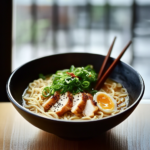
Authentic Japanese Ramen
- Total Time: 4 hours 30 minutes
- Yield: Serves 4
Description
Japanese Ramen is a culinary masterpiece that invites you to experience a symphony of rich flavors and comforting textures. This authentic recipe allows you to recreate the heartwarming essence of Japanese ramen right in your own kitchen. Picture yourself indulging in perfectly cooked ramen noodles immersed in a savory broth, enhanced by fresh toppings like soft-boiled eggs and vibrant green onions. Whether it’s a weeknight dinner or a lively gathering with friends, this customizable noodle soup is sure to impress and satisfy every palate. With straightforward instructions and quality ingredients, you’ll be on your way to serving up bowls of deliciousness that capture the spirit of Japan.
Ingredients
- Ramen noodles (fresh or dried)
- Pork bones (neck bones or trotters)
- Chicken stock
- Low-sodium soy sauce
- Mirin (sweet rice wine)
- Soft-boiled eggs
- Green onions
- Nori sheets
Instructions
- Preheat the oven to 400°F (200°C) and roast pork bones for 30 minutes.
- In a large pot, combine roasted bones with chicken stock and water; bring to a boil, then reduce heat and simmer for at least 4 hours.
- Strain solids from the broth; return clear broth to heat and stir in soy sauce and mirin.
- Cook ramen noodles in boiling water according to package instructions; drain.
- In bowls, place cooked noodles and pour hot broth over them.
- Top with soft-boiled eggs, green onions, nori sheets, and any additional desired toppings.
- Prep Time: 30 minutes
- Cook Time: 240 minutes
- Category: Main
- Method: Soups
- Cuisine: Japanese
Nutrition
- Serving Size: 1 serving
- Calories: 600
- Sugar: 2g
- Sodium: 1200mg
- Fat: 20g
- Saturated Fat: 7g
- Unsaturated Fat: 12g
- Trans Fat: 0g
- Carbohydrates: 78g
- Fiber: 4g
- Protein: 30g
- Cholesterol: 100mg

